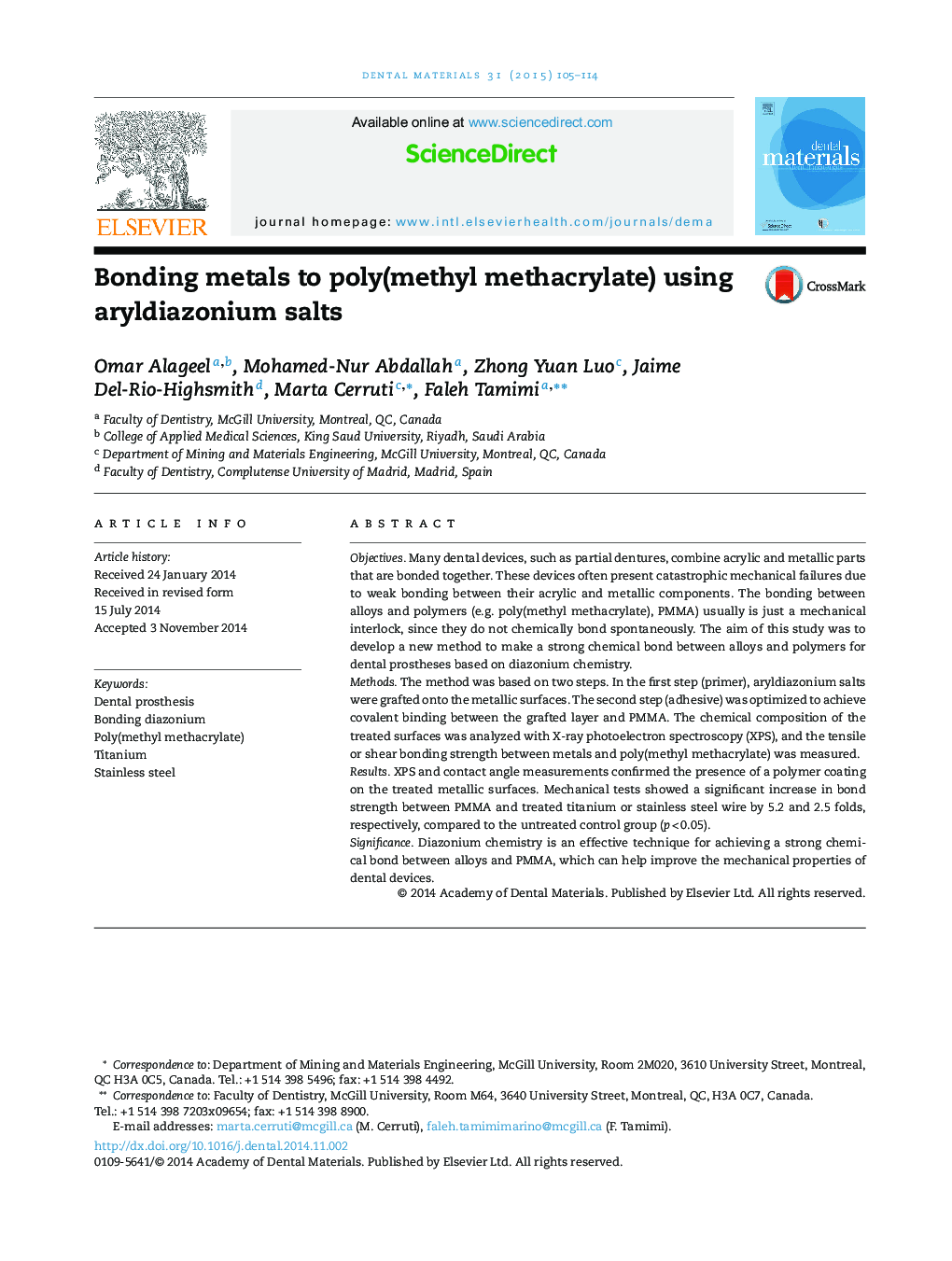| Article ID | Journal | Published Year | Pages | File Type |
|---|---|---|---|---|
| 1420607 | Dental Materials | 2015 | 10 Pages |
•Diazonium can be used to improve the mechanical properties of dental devices.•Diazonium treatment improved the bonding strength between alloys and PMMA.•Diazonium treatment can be applied on dental alloys in a two steps.•Benzoyl peroxide was added in the treatment to increase PMMA polymerization rate.
ObjectivesMany dental devices, such as partial dentures, combine acrylic and metallic parts that are bonded together. These devices often present catastrophic mechanical failures due to weak bonding between their acrylic and metallic components. The bonding between alloys and polymers (e.g. poly(methyl methacrylate), PMMA) usually is just a mechanical interlock, since they do not chemically bond spontaneously. The aim of this study was to develop a new method to make a strong chemical bond between alloys and polymers for dental prostheses based on diazonium chemistry.MethodsThe method was based on two steps. In the first step (primer), aryldiazonium salts were grafted onto the metallic surfaces. The second step (adhesive) was optimized to achieve covalent binding between the grafted layer and PMMA. The chemical composition of the treated surfaces was analyzed with X-ray photoelectron spectroscopy (XPS), and the tensile or shear bonding strength between metals and poly(methyl methacrylate) was measured.ResultsXPS and contact angle measurements confirmed the presence of a polymer coating on the treated metallic surfaces. Mechanical tests showed a significant increase in bond strength between PMMA and treated titanium or stainless steel wire by 5.2 and 2.5 folds, respectively, compared to the untreated control group (p < 0.05).SignificanceDiazonium chemistry is an effective technique for achieving a strong chemical bond between alloys and PMMA, which can help improve the mechanical properties of dental devices.
